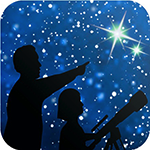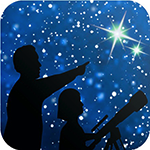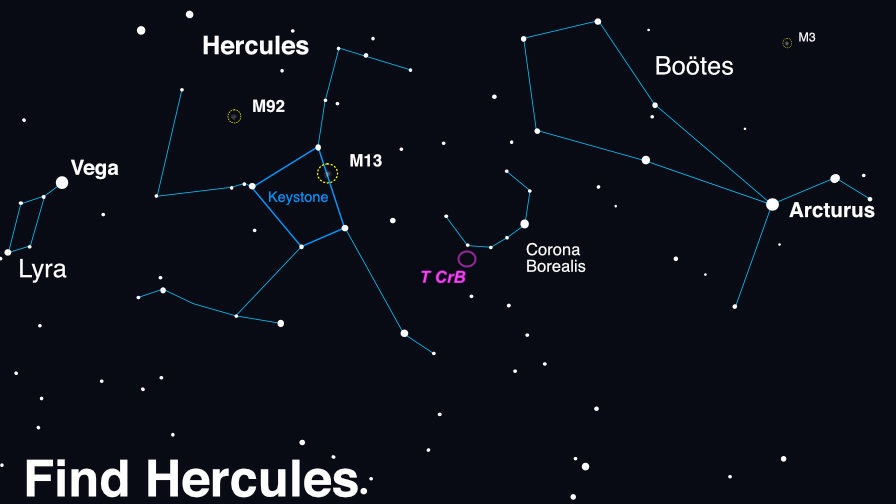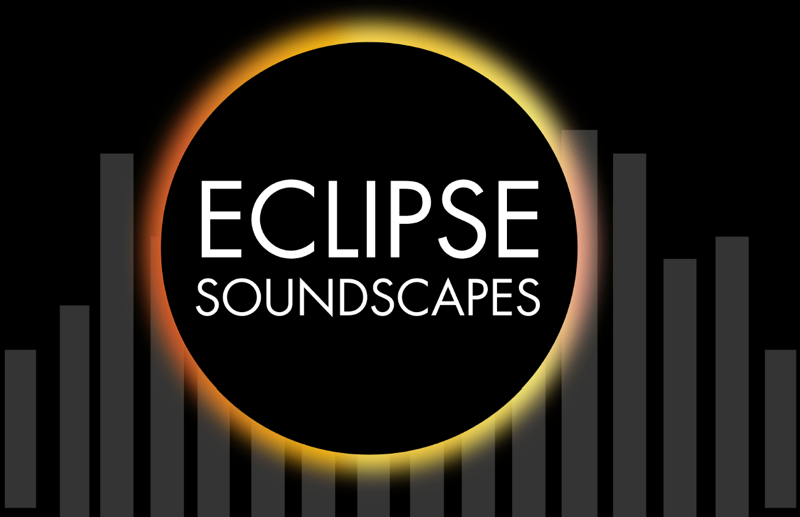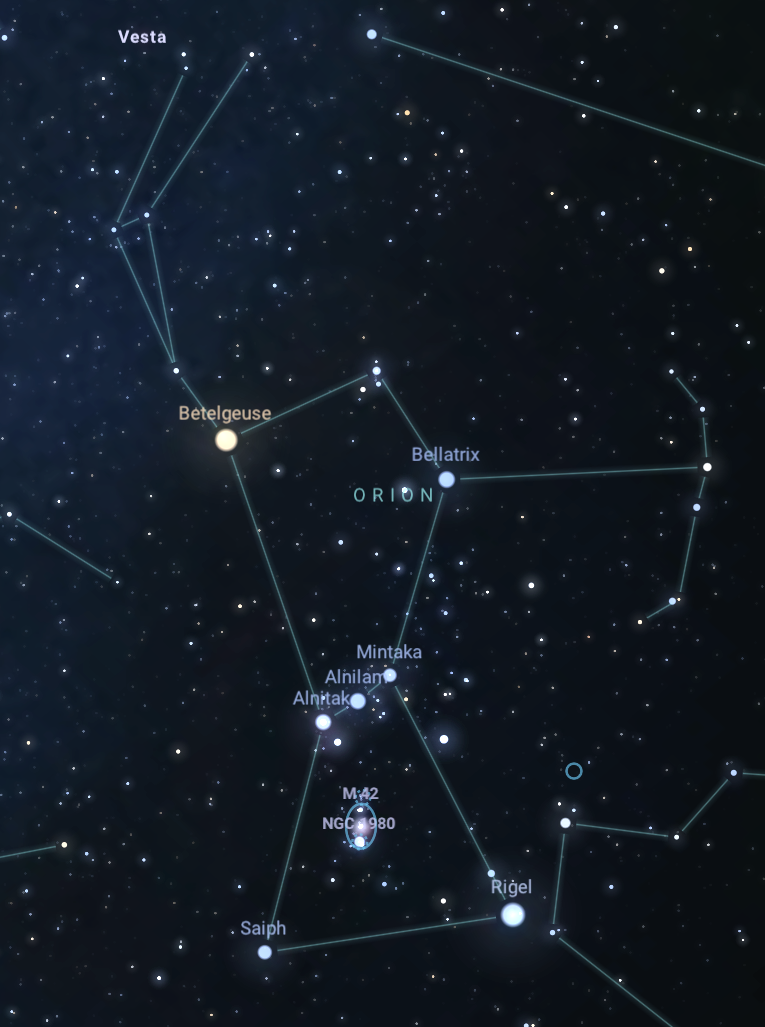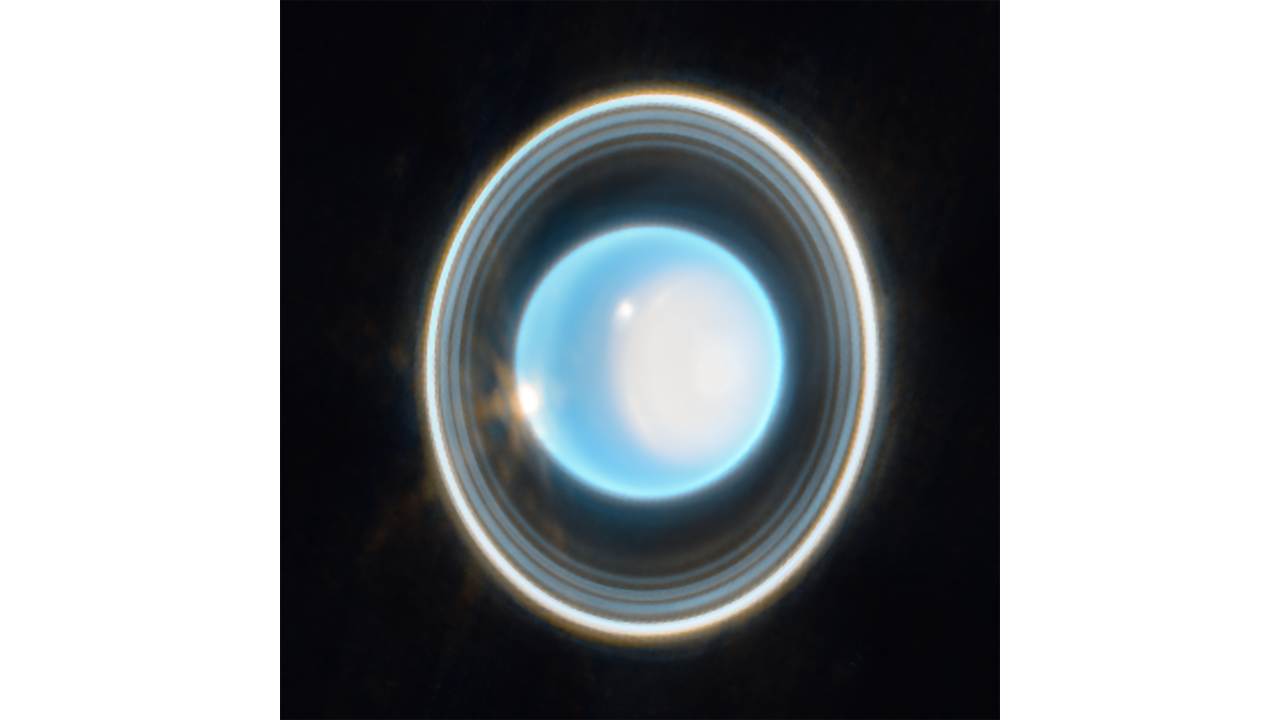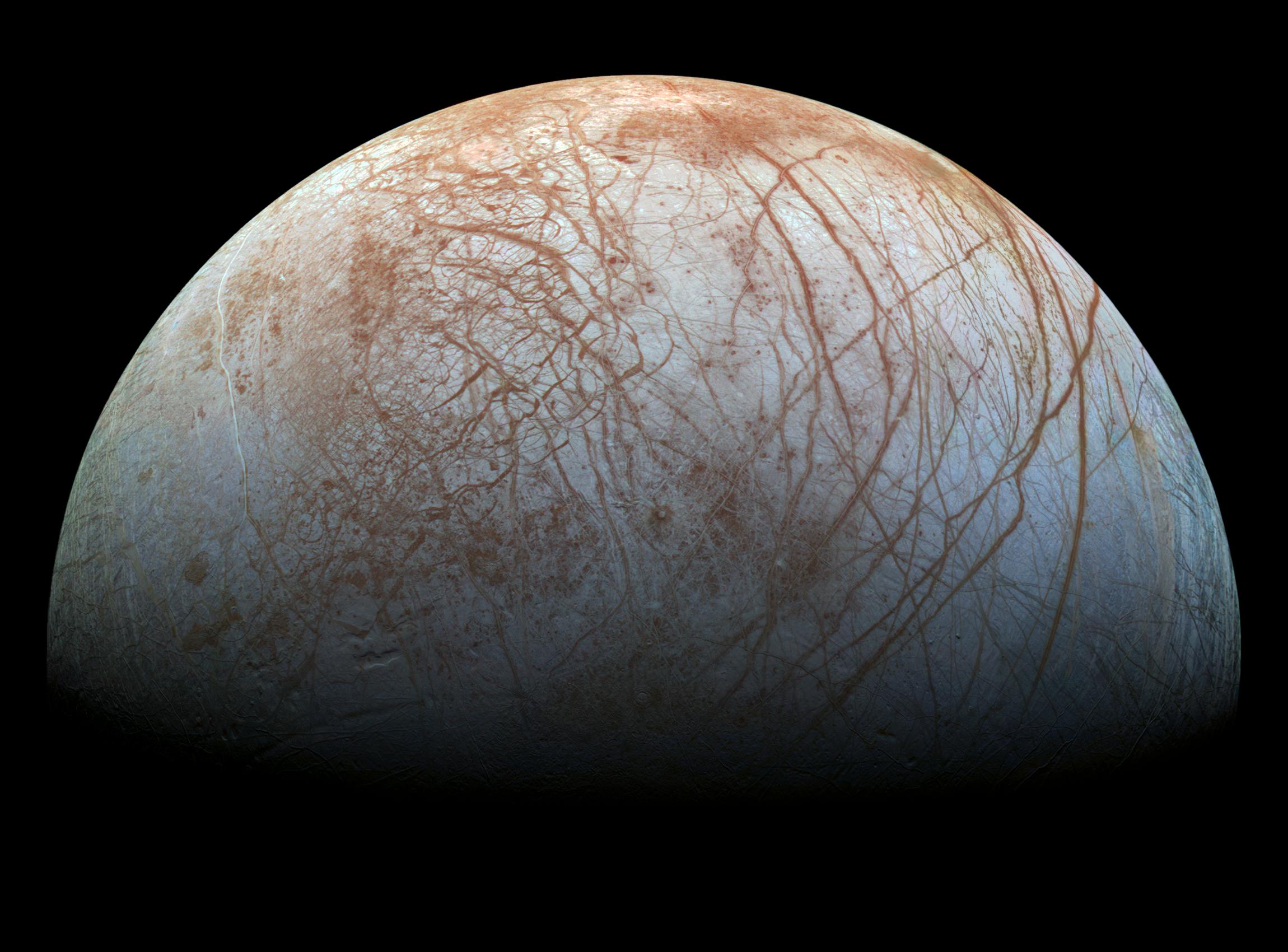During the summer months, we tend to miss the views of Saturn, Jupiter and other heavenly bodies. But it can be a great time to look for other items, like globular star clusters such as Messier 13, open star clusters such as the Coma Star Cluster (Melotte 111), but also double stars!
Author Archives: wpadmin
A Hero, a Crown, and Possibly a Nova!
High in the summer sky, the constellation Hercules acts as a centerpiece for late-night stargazers. At the center of Hercules is the “Keystone,” a near-perfect square shape between the bright stars Vega and Arcturus that is easy to recognize and can serve as a guidepost for some amazing sights. While not the brightest stars, the shape of the hero’s torso, like a smaller Orion, is nearly directly overhead after sunset. Along the edge of this square, you can find a most magnificent jewel – the Great Globular Cluster of Hercules, also known as Messier 13.
Look up after sunset during summer months to find Hercules! Scan between Vega and Arcturus, near the distinct pattern of Corona Borealis. Once you find its stars, use binoculars or a telescope to hunt down the globular clusters M13 (and a smaller globular cluster M92). If you enjoy your views of these globular clusters, you’re in luck – look for another great globular, M3, in the nearby constellation of Boötes. Image created with assistance from Stellarium: stellarium.org
Participate in Eclipse Science
April is NASA’s Citizen Science Month, and there is no shortage of projects available. Here are some citizen science projects that you can participate in on April 8th, on and off the path of totality right from your smartphone!
Eclipse Soundscapes, ARISA Lab / NASA
Constant Companions: Circumpolar Constellations, Part II
As the seasons shift from Winter to Spring, heralding in the promise of warmer weather here in the northern hemisphere, our circumpolar constellations remain the same. Depending on your latitude, you will be able to see up to nine circumpolar constellations. This month, we’ll focus on: Lynx, Camelopardalis, and Perseus. The objects within these constellations can all be spotted with a pair of binoculars or a small to medium-sized telescope, depending on your Bortle scale – the darkness of your night skies.
Constant Companions: Circumpolar Constellations, Part I
Winter in the northern hemisphere offers crisp, clear (and cold!) nights to stargazers, along with better views of several circumpolar constellations. What does circumpolar mean when referring to constellations? This word refers to constellations that surround the north and south celestial poles without ever falling below the horizon. Depending on your latitude, you will be able to see up to nine circumpolar constellations in the northern hemisphere. Today, we’ll focus on three that have gems within: Auriga, Cassiopeia, and Ursa Minor. These objects can all be spotted with a pair of binoculars or a small to medium-sized telescope.
Connecting the ‘Dots’ with Asterisms
In our December Night Sky Notes, we mentioned that the Orion constellation has a distinct hourglass shape that makes it easy to spot in the night sky. But what if we told you that this is not the complete constellation, but rather, an asterism?
An asterism is a pattern of stars in the night sky, forming shapes that make picking out constellations easy. Cultures throughout history have created these patterns as part of storytelling, honoring ancestors, and timekeeping. Orion’s hourglass is just one of many examples of this, but did you know Orion’s brightest knee is part of another asterism that spans six constellations, weaving together the Winter night sky? Many asterisms feature bright stars that are easily visible to the naked eye. Identify these key stars, and then connect the dots to reveal the shape.
A Flame in the Sky – the Orion Nebula
It’s that time of year again: winter! Here in the Northern Hemisphere, the cold, crisp sky offers spectacular views of various objects, the most famous of all being Orion the Hunter.
Credit: Stellarium Web
Spy the Seventh Planet, Uranus
You might be familiar with Saturn as the solar system’s ringed planet, with its enormous amount of dust and ice bits circling the giant planet. But Uranus, the next planet out from the Sun, hosts an impressive ring system as well. The seventh planet was the first discovered telescopically instead of with unaided eyes, and it was astronomer extraordinaire William Herschel who discovered Uranus March 13, 1781. Nearly two centuries passed before an infrared telescope aboard a military cargo aircraft revealed the planet had rings in 1977.[1]
From Galileo to Clipper, Exploring Jupiter’s Moons
“…We, too, are made of wonders, of great
and ordinary loves, of small invisible worlds,
of a need to call out through the dark.”
From In Praise of Mystery: A Poem for Europa by Ada Limon
Europa
Looking Beyond the Stars
Looking up in awe at the night sky, the stars and planets pop out as bright points against a dark background. All of the stars that we see are nearby, within our own Milky Way Galaxy. And while the amount of stars visible from a dark sky location seems immense, the actual number is measurable only in the thousands. But what lies between the stars and why can’t we see it? Both the Hubble telescope and the James Webb Space Telescope (Webb) have revealed that what appears as a dark background, even in our backyard telescopes, is populated with as many galaxies as there are stars in the Milky Way.

